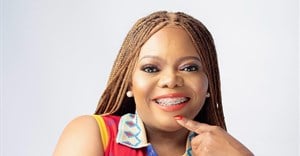
Subscribe & Follow
Jobs
- Junior Copywriter Sandton
- Advertising Sales Executive - Travel News Johannesburg
- UI/UX Designer Durban
- Creative Director Johannesburg
- Social Media Specialist Johannesburg
- Advertising Specialist - Get It Magazine Durban Durban
- Advertising Sales Executive Sandton
- Art Director Sandton
- Senior Working Art Director / Designer Johannesburg
- Senior Account Manager Cape Town, Johannesburg
Defensive strategy in a game challenger brands are doomed to lose
Earlier this year, NAB invited me to a regular event they run called NAB bites. The speaker was Associate Director and Market Scientist at the Ehrenberg Bass institute of the University of South Australia in Adelaide, Professor Rachel Kennedy. Here's what she had to say...
Attention is much more important than loyalty
The topic was budgeting for advertising and how to justify the budget. Kennedy based her findings on science, something that advertising is not that well known for. The Director of the institute, Byron Sharp, Is the author of marketing book How Brands Grow, which debunks using science many of marketing's holy cows, including the loyalty myth. Well worth reading. He found that attention is much more important than loyalty, as loyalty really is a bit of a myth.
Other than the fact that I was in a room full of media planners writing things down on paper when I'm more accustomed to people taking notes on tablets and summarising the talk on Twitter, it served as a fantastic reminder of 'ad think'.
Advertising is a defensive strategy
Then Kennedy said something made me pause and think: "Advertising is a defensive strategy." Basically, this means you have to spend, you have no choice.
Anyone attending the most basic advertising course has learned the budgeting principle that share of voice, which is your share of advertising category spend, needs to equate roughly to share of market. Research shows that brands that spent less than their share of market percentage lost market share.
But although the converse is true, Kennedy also presented the sobering thought that this didn't quiet hold true for challenger brands, which actually had to spend a greater proportion in order to stay where they are. This equates to brands with a 5% market share having to spend 9% share of the category spend in order to just keep pace.
No advertising = no effect?
That was the crux of Kennedy's talk. But what does this actually mean?
I put forth it means we are all just treading water. The bulk of our advertising adds no value, it's primarily a defensive strategy. It's not wasted, it's just not moving you forward. Taking it another way, if everyone stopped advertising altogether, the result would be almost nothing. Nothing would happen. Now that's an intriguing thought.

From this base, the only way you could increase market share would be through a considerable increase in advertising spend. On average, for every 1% increase in ad spend, you can expect a 0.1% increase in sales.
For big brands, that's easy - they would already have the sales volume. For small brands and challenger brands, that is a tall order. They already have to spend more than the norm and would therefore have to spend considerably more to have any hope of making headway. Doing that consistently in the long term is impossible. Profitability may be irreparably eroded and, with greater resources, the dominant brands can destroy challenger profitability completely by merely increasing the category spend.
Over time though, the small brands would get smaller and the big brands would get larger.
Is going digital the solution?
I believe that the same thinking applies to digital. Brands use digital and social media the same way they do advertising. It's broadcast media. Brands look for audience page likes, Twitter followers and more, and blast their messages out to them. For the earlier adopters that will help, but when everyone arrives at the game, we are back at the same place.
Stalemate.
So what to do?
Challenger brands need to play where smarts beats budget
Disrupt the model, own the conversation about the category. A perfect strategy for challenger brands and very difficult for dominant brands to break, because it can't be done merely with budget. It takes smarts as well.
We have been doing it through careful analysis of the conversation around the category. Identify the people who care and those who have a prominent position or role in the conversation. Assist them on achieving their goals as they coincide with ours.
Brands are largely ignoring this area because it's hard and they don't think that the tools exist to analyse it and find it out.
I include a picture here of the map around the prominent South African brand Old Mutual. It's a pretty typical brand with very little online community, with awareness trumping loyalty.
But where there is community, the most central person on Twitter is @meangreenmut. He is the mayor of Old Mutual 'socialmedia-ville'. There is only one problem - he hates Old Mutual with a passion.
He has no resources, but he has position and he has influence. If left on his own, he could ensure that the brand is damaged to the extent that Old Mutual would need to spend a considerable amount to neutralise it. So even as a small, naive player he has serious power. Small brands playing smart can have similar power.
Competitive strategy is always about creating an unfair advantage for oneself, making sure that the playing fields are not level. Use your advertising budget to hold the status quo. Find your growth through smarts.
Why are brands content to slug it out in a space where the most powerful budget will always win?



















